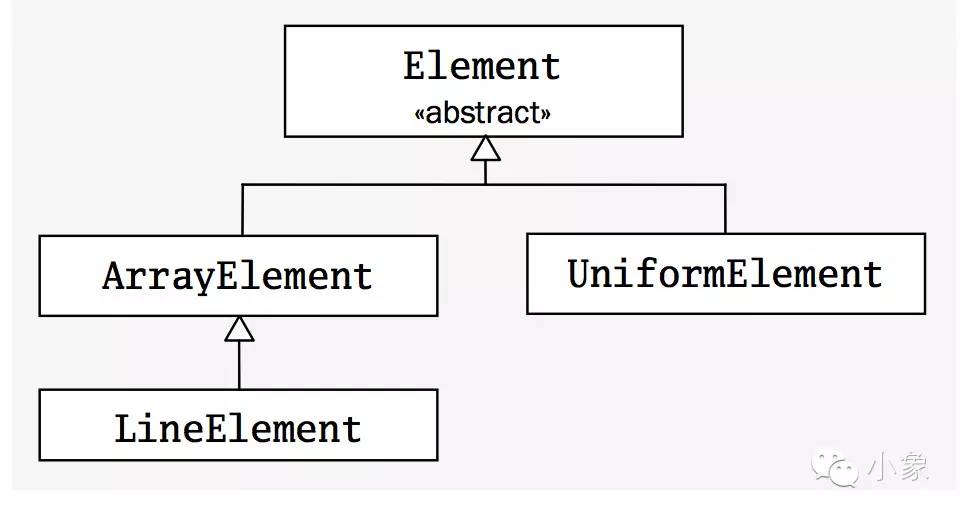scala入门笔记
Posted 小象
tags:
篇首语:本文由小常识网(cha138.com)小编为大家整理,主要介绍了scala入门笔记相关的知识,希望对你有一定的参考价值。
Scala简介
Scala 是一门多范式的编程语言, 由Martin Odersky 于2001年基于Funnel的工作开始设计Scala并于2004年正式发布
Scala是一种纯面向对象的语言,每个值都是对象
Scala是一门多范式编程语言, 支持命令交互式, 函数式, 面向对象
编译型高性能语言(静态)
与Java无缝兼容, 可以使用任何Java库
代码风格
函数和变量以小驼峰命名
类和特质以大驼峰命名
常量使用全大写命名
一般使用两格缩进
Scala大部分情况可以忽略语句末尾的分号
Scala变量
Scala中尽量避免使用变量, 函数式编程的一个重要特性是不可变性(不可变变量没有副作用)
Scala是静态类型语言, 但是不需要显式的指明变量类型, Scala采用类型推断(Type Inference)
1 |
//定义一个变量 |
Scala基本类型和操作
String和值类型Byte, Short, Int, Long, Float, Double, Char, Boolean
Scala的操作符不是特殊的语言语法, 任何方法都可以是操作符
操作符分为前缀, 中缀, 后缀
Scala中所有操作符都是方法调用
1
2
3
4
5
6
7
8
9
10
11# 前缀
scala> (2.0).unary_-
res1: Double = -2.0
# 中缀
scala> x indexOf 'o'
res0: Int = 4
# 后缀
scala> val x = "Hello, World"
x: String = Hello, World
scala> x.toLowerCase
res0: String = hello, world
中缀操作符的两个操作数, 一个在左一个在右
前缀操作符方法名在操作符上加了unary_前缀(+, -, !, ~)
后缀操作符是不用点或括号调用的不带任何参数的方法
算术操作符: +, -, *, /, %
关系, 逻辑和位操作: >, <, >=, <=, ==, !=, &&, ||, &, |, ^, ~(反码)
位移操作: <<, >>, >>>(无符号右移)
Scala函数
函数式语言的一个主要特征是, 函数是第一类结构
函数定义如下图:
scala 函数
Unit 的结果类型指的是函数没有返回有用的值
函数式对象
object和class的区别在于: object关键字创建一个单例对象
主构造器是类的唯一入口, 只有主构造器可以调用超类构造器
override关键字用于在重载父类的非抽象成员和成员函数
同一个类内函数名相同而参数类型和个数不同的函数重载不需要override
1 |
class Rational (n: Int, d: Int) { |
继承和多态
继承
多态和动态绑定特性
动态绑定的特性即父类指针可以指向子类对象, 通过父类指针调用成员方法时, 会查找实际所指向的对象, 然后调用对象的内的对应方法
1 |
val el: Element = new ArrayElement(Array("hello")) |
内建控制结构
表示式会产生一个值
Scala中if是能返回值的表达式, Scala中没有三元操作符, 但通过if (condition) var1 else var2 可以实现三元操作符的功能
while和do-while被称为循环, 不产生有意义的结果
Scala中for语句非常强大, for {子句} yield {循环体}
match表达式可以产生值, match远强大与其他语言中的switch, 而且不需要显示的声明break
变量范围: 大括号引入了一个新的范围, 内部变量会遮盖同名的外部变量
占位符语法
函数文本(匿名函数, 类似于python中的lamda)
1 |
var filename = if (!args.isEmpty) args(0) else "default.txt" |
柯里化(carry)
1 |
// 普通函数 |
特质(trait)
特质就像带有具体方法的java接口
特质和抽象类的区别: 抽象类主要用于有明确的父子继承关系的类树, 而特质可以用于任何类
特质定义使用trait关键字
1 |
trait Person() { |
数据结构
Python中常用list, tuple, set, dict
Scala对应的数据结构为List, Tuple[X], Set, Map(HashMap)
Scala中默认为不可变对象, 操作会生成一个新的对象
包
Scala采用java平台的包机制
使用import来进行引用
1 |
package com.zhihu.antispam |
参考书目
Difference between object and class in Scala
scala 入门
Scala 魔法函数
Dependency Injection in Scala
Databricks Scala 编程风格指南
What are all the uses of an underscore in Scala?
来源:东杰书屋
以上是关于scala入门笔记的主要内容,如果未能解决你的问题,请参考以下文章